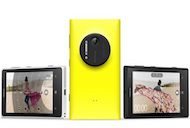Nokia sold 7.4 million Lumia smartphones during its second quarter—a 32 percent year-on-year increase and its strongest Lumia sales tally to date.
But the Finnish phone maker, once the reigning world leader in mobile phone sales, still posted a $298 million loss, coming in below analyst estimates.
Offering small boosts were Nokia’s Here mapping software, which is making its way to consumer fingertips through deals with automakers, in addition to smartphones, and its Nokia Siemens Networks (NSN) investment. Nokia owns half of the telecom supplier and recently made a bid to purchase the rest from Siemens for $2.2 billion.
On the group level, Nokia said it made an “underlying operating profit” for the fourth consecutive quarter.
“Given the market conditions,” Nokia CEO Stephen Elop said during the July 18 earnings call, “we remain focused on executing our strategy, improving the competitiveness of our products, effectively managing our costs and moving with urgency.”
Elop pointed out that Nokia started the “ramp up” of its higher-end Lumia devices at the end of the quarter and so saw “limited impact” from these devices.
On July 11, Nokia introduced the Lumia 1020, a Windows Phone-running smartphone with a 4.5-inch display and a camera that no other smartphone comes close to. AT&T CEO Ralph de la Vega, announcing that AT&T will begin selling the phone July 26, said that everyone he shows the phone to answers with the same word: “Wow.”
The phone will sell for $299 with a two-year contract—a challenging price point for a company that continues to struggle to take back market share from Samsung and Apple and an operating system that’s slowly getting its feet under it but is generally considered a bust.
Gartner analyst Carolina Milanesi tweeted during a Webcast introducing the 1020 that its price was necessary to “establish it as true flagship” (if not also to cover the intense R&D that no doubt went into the device). “Promotions can always be run if needed,” she added.
During the second quarter, however, Nokia’s focus was chasing the sub-$100 market with the Asha 501, which Elop said did well in India, Thailand and Vietnam. In China, India and Nigeria, the company also generated “a lot of consumer excitement” with its sub-$70 Nokia 207 and Nokia 208—devices that provide “fast Internet access,” said Elop.
As at the high-end market, Nokia is racing to court consumers away from the most-affordable offerings from Samsung, and Apple is expected this year to introduce a sub-$100 iPhone for emerging markets.
In the United States, where Nokia continues to sell only about half a million units per quarter, Elop said Nokia has had some success with the Lumia 928 at Verizon and the Lumia 520 at T-Mobile, and the Lumia 1020 will offer AT&T something “fresh” for the first time since November.
“We think that’s really important,” said Elop. “So … we have to break through. We know there is a lot of hard work ahead, but we remain committed to America.”
Concluding his remarks, Elop repeated that he’s well aware of Nokia’s need to succeed and do it quickly. (Elop confirmed that, in a cost-saving measure, Nokia will continue to tighten its ranks where it can.)
“We recognize that in this environment we must operate with urgency and continue to differentiate our products with new innovations and design that capture consumers’ attention,” he said. “The entire Nokia team recognizes we have lots of hard work ahead.”
